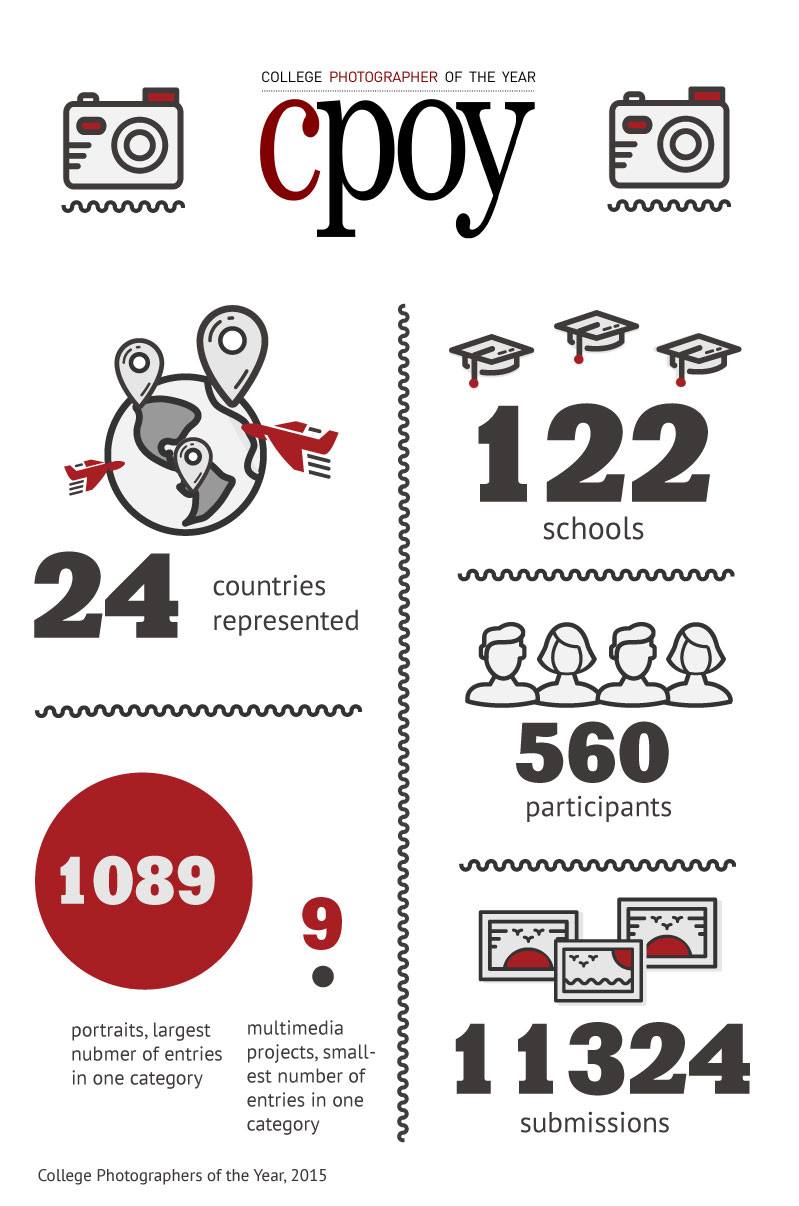This post is from CPOY 70. Click
here to view only current posts.

Carolyn Van Houten's photograph of Serenity Bamberger got a Gold award in the Portrait category at the recent CPOY 70, and is a part of Carolyn's CPOY-winning Portfolio. Catching Photo of Yours (CPOY) is a new CPOY Blog feature that gives photographers a chance to share the emotional and technical aspects of making their award-winning photograph.
In my story about the Bambergers rebuilding after the flood, I wanted to show the relationship that the Bambergers had with the Little Blanco River—the river that destroyed their home, their business and their sense of security. The river was bone dry for years before this past Spring. In the months after the water receded from the flood, the river became an almost daily part of the Bamberger’s lives. They would swim in it, celebrate on its shores and check it hourly for flooding when rainstorms came. It was important to me that I show their relationship with the river. I wanted the river to become a subtle character in their story.
In the months leading up to this moment with Serenity in the river, I had photographed the girls in the river many times. There is a steep bank along the river on their property, so sometimes I would photograph from up high. Other times I would carefully climb down and sit on the bank to photograph. However, the river bed was filled with slick rocks, so I did not trust myself to get in with my gear unprotected. To fix this problem, I got a waterproof bag that was big enough to fit my camera inside. A few days later, I returned to the river. After placing the camera in the bag, I started to climb down the bank into the river. Sure enough, the second I fully stepped into the river, I slipped and fell face first and fully clothed into the water. Once Serenity and Cielo stopped laughing at my clumsiness, they went back to swimming and playing as if I wasn’t there. Thankful for my waterproof bag, I stood in the river with my dry camera and let the swirl of activity and water happen around me. A huge oak tree stands on the river bank casting shadows and speckled light across the river. Knowing that Serenity often floats on her back while swimming in the river, I quietly waited until she floated through that speck of light.
Since this image was made, the Bambergers moved into their new home on stilts on their youngest daughter Esme’s first birthday. That same week their property flooded and they were evacuated. Their relationship with the river will always be a tenuous one, but it will take a lot more than losing their home to break the family’s bond with their land and the river.

This post is from CPOY 70. Click
here to view only current posts.

Brittany Greeson's photograph 'Kenth' got a Silver award in the Portrait category at the recent CPOY 70, and is a part of Brittany's award-winning Documentary project. Catching Photo of Yours (CPOY) is a new CPOY Blog feature that gives photographers a chance to share the emotional and technical aspects of making their award-winning photograph.
This image was taken when I was working on my final project at The Danish School of Media and Journalism in Aarhus, Denmark in the Fall of 2014. A good friend of mine, Soren Degn, told me about an institution for the mentally handicapped called Solund. I instantly fell in love with the people there and the staff members. Kenth, however, caught my attention in a unique way and it was actually through the making of this photo that he did.
I originally began work on the story in an essay form on the entire institution. I had been documenting other people in their living areas. I was simply walking past his room with my camera and the second I ducked my head in to take a photo of him he ducked behind his bedroom wall. It was a matter of seconds. This photograph is of one of those first exchanges. That’s why it’s so important to me, it’s an authentic moment between us and reveals his original feelings toward me. Feelings that quickly faded away as time passed we were able to get closer. It taught me how important relationship building is and I soon realized the story of Solund resided in one person.
In working on this story, my goal was to show the depth of his character and the support network around him. Mentally around 18 months old, Kenth can’t speak for himself. So, I approached his caretakers, Solund’s administrative staff and Kenths parents to pursue the story. I wanted them to be 100 percent on board and never wanted to show them why it was I was doing this story. Sadly, there are a lot of instances that the mentally handicapped are portrayed in a kind of freakshow way. With Kenth, I wanted to do my best to show a sense of beauty that so many people see in him. I learned so much about the empathy of others, a form of empathy I respected and admired. I simultaneously became more interested in how the United States offers care to the mentally handicapped and hope to document those issues further. I think this story will always leave a huge impact on me as a photographer and shape the way I approach more sensitive topics.

This post is from CPOY 70. Click
here to view only current posts.

Daniel Owen's story 'The Jews of Oradea: A Story of Survival' got a Silver award in the Documentary category at the recent CPOY 70, and is a part of Daniel's award-winning portfolio. Catching Photo of Yours (CPOY) is a new CPOY Blog feature that gives photographers a chance to share the emotional and technical aspects of making their award-winning photograph.
The image is from early on in my documentary about the Jewish community in Oradea, Romania, and, in my opinion, it contains the essence of the story.
The documentary started while I was in Romania working on a separate story about the Roma. During an evening walk to the city center from my house on the edge of town, I noticed an enormous synagogue just sitting there, dilapidated and empty.
The more I learned about the community that once thrived here, the more I felt a responsibility to tell their story. So what was initially a three-week trip turned into ten months, and finishing the piece would mean several trips back to Romania over the next two years.
I was eventually able to get a meeting with the president of the community and propose my story idea. Until then, the community had been very protective of the survivors, and rightly so. I had been told about photographers trying to photograph survivors without any respect for what they had gone through.
I assured them that I had no desire to tell a story that focused only on the Holocaust, whilst ignoring all the good that had been done throughout the community before the war. I wanted to tell the complete story of these people and their struggle to survive. Their history had nearly been erased seventy years ago, and I wanted to do my best to preserve it.
The image was taken during a Torah reading at the Sas Chevra Synagogue, the only functioning synagogue left in the city. I had been invited to be a part of their sacred ritual. I remember shooting and just being aware of the solemnity of the moment. They had survived genocide and now they were reading from this scroll just like their ancestors had done for thousands of years. It was a humbling experience.
Looking through a window into the empty sanctuary, I saw their reflections fill the seats. It was like looking into the past. Thousands of their relatives were murdered simply for being Jewish. Yet despite it all they were still there, and they were still praying. It changed my life.

This post is from CPOY 70. Click
here to view only current posts.
This post is from CPOY 70. Click
here to view only current posts.
This post is from CPOY 70. Click
here to view only current posts.

John Happel's photograph 'Things Left Behind' got an Award of Excellence in the Interpretive Eye category at the recent CPOY 70. Catching Photo of Yours (CPOY) is a new CPOY Blog feature that gives photographers a chance to share the emotional and technical aspects of making their award-winning photograph.
The story behind this photo began in April 2015 when over 90 residents of Sunset & Ed's trailer park received news that they had six months to vacate the property. Most of the people who lived there were impoverished with some trying to support children and families on what little they had. To me, this story was emblematic of what sometimes happens to poor people when a town or city undergoes a period of boom and development: they get pushed further and further toward the fringes. Ironically, these are the very people that depend on being close to urban centers so that they can work and find jobs.
When I began photographing there, I took portraits using artificial lighting. During that time, I got to know the people who lived there and the troubles they faced in their daily lives. When I returned in the fall, the trailer park had already changed so much. More than half of the residents had already left, many without their trailer homes. Most of the trailers that people owned were difficult to sell and too old to be accepted at the few remaining trailer parks in the area.
As the eviction date drew closer, I knew that the transition would not be easy for the people still living there. I wanted to document what was happening and try to show that this was 'home' to some. It wasn't an idyllic place to grow up or raise a family, but it meant something to some people. Soon this neighborhood would be just another vacant lot waiting to be developed. There was something haunting and sad about the things I saw there in the last few weeks before the park closed. I was trying to pay attention to how that felt when I photographed.
The picture that I made was meant to show that the abandoned trailer was once home to a family. It looked as if the family had left in a hurry since most of their belongings were strewn about the yard and left inside the trailer. The teddy sat is such contrast to the its surroundings. I think that is what drew me to the scene. I got to know many of the children in the neighborhood during the time I spent there. I became a welcomed visitor after a while. I knew that this scene was foreshadowing what would soon come for those who had not yet left.

This post is from CPOY 70. Click
here to view only current posts.
This post is from CPOY 70. Click
here to view only current posts.

Christian Randolph's photograph of Ava Cota got an Award of Excellence in Portrait category at the recent CPOY 70. Catching Photo of Yours (CPOY) is a new CPOY Blog feature that gives photographers a chance to share the emotional and technical aspects of making their award-winning photograph.
This portrait of Ava Cota was shot as a daily assignment during my internship for the Flint Journal and the result of a subject who thankfully was flexible as I came up with portrait ideas following a general theme on the fly.
My goal from the outset of the assignment was to create an image that was more than 'just' a photograph of a dancer. Because of Ava's skill, I knew that an image of Ava dancing would likely be visually strong enough to stand on its own but that also sparked a motivation to bring something else to the composition of the picture. Not so much to add complexity for complexity's sake, but because I felt the more visually interesting a subject you start with, the more energy as a photographer you have to invest to not just be making a snapshot of the cool thing in front of your camera.
With about an hour to scout beforehand, my focus was to find roof access and make a frame that incorporated Ava jumping and her hometown's skyline but I had no luck. Several roofs looked like prime locations but all inquiries to actually shooting there were met with polite deflections or responses of, "the person in charge of that has gone for the day." So I had nothing with five minutes until the start of the portrait.

This post is from CPOY 70. Click
here to view only current posts.

Dougal Brownlie's photograph 'Fight for Freedom' got a Gold award in Sports Feature category at the recent CPOY 70. Catching Photo of Yours (CPOY) is a new CPOY Blog feature that gives photographers a chance to share the emotional and technical aspects of making their award-winning photograph.
I have always loved history, sports and travel. During my senior year of college college I made it a point to include a trip to a more unusual destination. When I had the rare opportunity to visit Cuba I could not resist. I knew that I would be able to find something interesting to document given the long-standing U.S. embargo against Cuba. I was really interested to see the impact of our policies on people’s lives. What I did not know was that during my visit on December 17, 2014, Obama would make an announcement calling for eventual full diplomatic relations with Cuba. I was really fortunate to have been able to witness history and to see the reactions of people everywhere.
While I was looking for a perfect moment my travel companion, Ross Thayer, invited me to accompany him to Rafael Trejo, a small covert boxing gym in Havana. Ross was doing a story on boxing, which I discovered continues to be a much-loved sport in Cuba despite the 50 year ban on professional sports. While I was at the gym, I took this picture of the young boys, their coach and the women in the window. I was hoping to show the love of boxing seen in the passion expressed by the coach, but I also wanted to include the women in the window as an expression of hope for their children to be strong and prosper. I chose to convert the photo to black and white in order to reduce distraction and to honor the nostalgia of a country on the cusp of the old and the inevitable new. sIn a way, given the historical context, this photo is a larger metaphor for Cuba, it’s fighting spirit, and it’s hope for the future.

This post is from CPOY 70. Click
here to view only current posts.

Tim Tai's photograph 'Fire' got a Bronze award in Spot News category at the recent CPOY 70. Catching Photo of Yours (CPOY) is a new CPOY Blog feature that gives photographers a chance to share the emotional and technical aspects of making their award-winning photograph.
One staple of newspaper photojournalists’ coverage is breaking news events, which occur somewhat infrequently in a town the size of Columbia, Missouri, where I go to school. I live within earshot of a fire station and often hear the sirens turning on from my bedroom. On this particular night, I was home when I heard sirens and checked the online fire dispatch log to learn there was a fire reported at a mobile home park in the north side of town. I grabbed my gear and my car and headed over, and arrived after the fire had basically been put out. I made some pictures of the residual firefighter activity around the mobile home, which had been seriously damaged on the inside.
At that point, I was able to walk around a bit more freely near the scene, and was asking some of the onlookers if they knew who lived in the home. Someone pointed out who one of the residents, Donnie Perkins, was and I learned that he had been living in the trailer to take care of his elderly mother, but he wasn’t home when the fire occurred. As Perkins was watching the firefighters finish their activity around the home, he pulled out a cigarette and put his hand on his forehead in a look of total exhaustion. At the same time, I had noticed a young boy peering out on the scene through a window in the mobile home behind Perkins, and I tried to layer the frame with another onlooker. I took two frames, but only the first captured the quiet moment before it disappeared. It happened to be a second where the flashing lights of the fire trucks illuminated the scene with a deep red glow, and I think color is a crucial part of what makes this image striking. I made other frames of him later in the night, but I felt this was the strongest one.
Photojournalism is inherently intrusive, and it is difficult and uncomfortable for journalists to cover traumatic breaking news events like fires and shootings and whatnot. Sometimes, victims of trauma in this situations don’t want their photos taken, and it becomes harder as a journalist to communicate the feeling of the scene. But Perkins did not seem to have a problem being photographed, even at a fairly close distance, or telling me about the home and his mother. That sort of openness is a privilege and never guaranteed, but in this case I think it allowed me to make an image that helps viewers feel a sliver of the weariness and pain of the situation.

This post is from CPOY 70. Click
here to view only current posts.
This post is from CPOY 70. Click
here to view only current posts.
This post is from CPOY 70. Click
here to view only current posts.
This post is from CPOY 70. Click
here to view only current posts.
This post is from CPOY 70. Click
here to view only current posts.
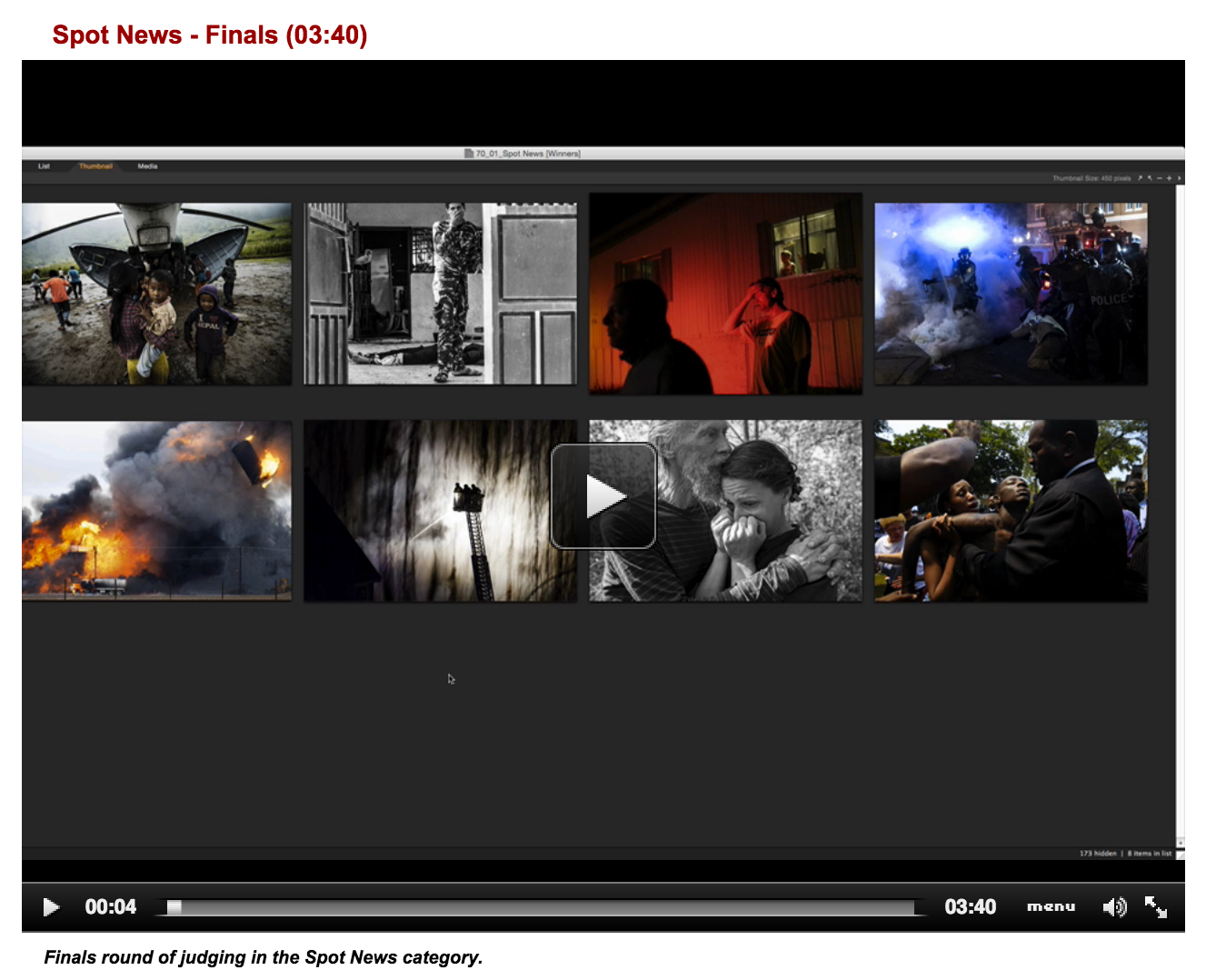
Screencasts of final rounds of the Spot News category judging are now online. Have a look!
This post is from CPOY 70. Click
here to view only current posts.
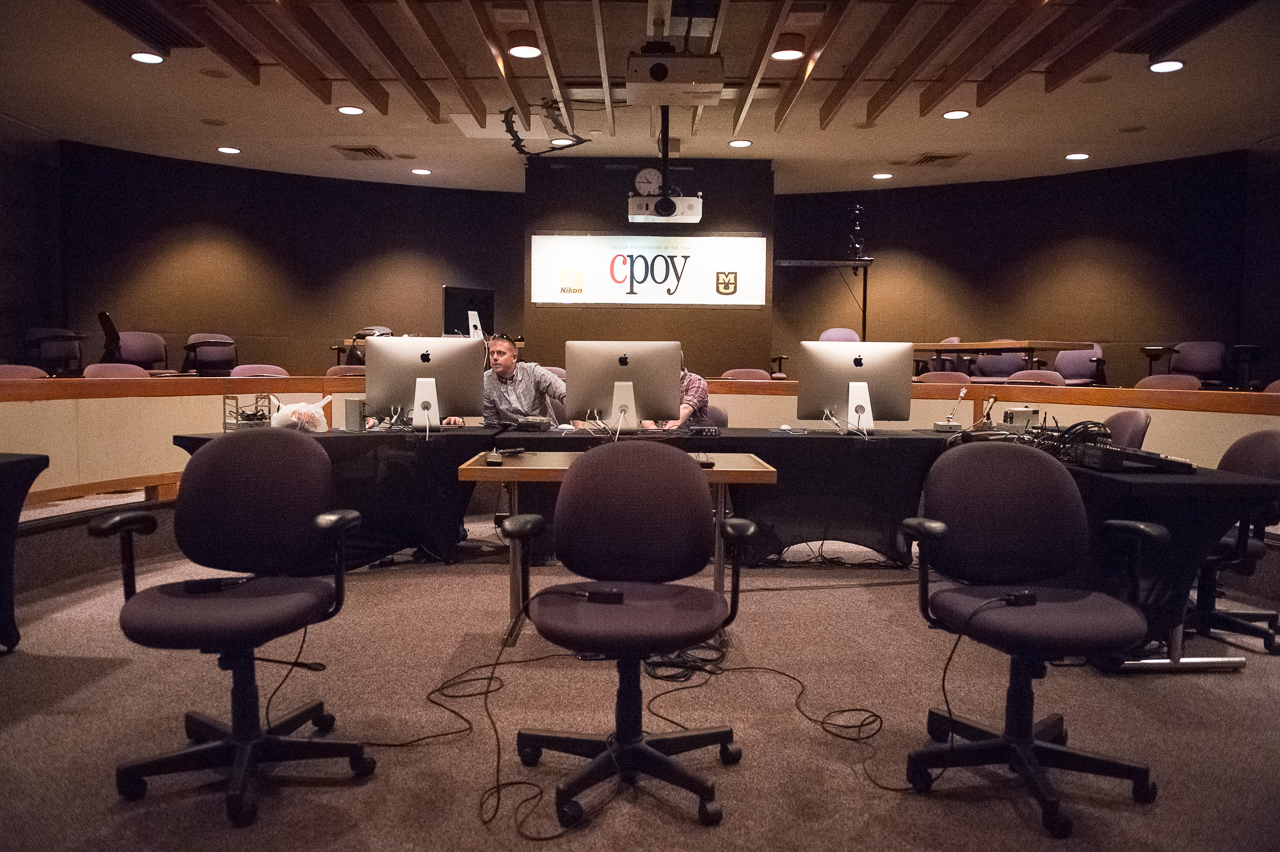
Click here to see the CPOY 70 Setup Time Lapse.
This post is from CPOY 70. Click
here to view only current posts.
Coordinators and volunteers of CPOY 70 prepare Tucker Forum for judging that starts on University of Missouri campus tomorrow with the Spot News Category.
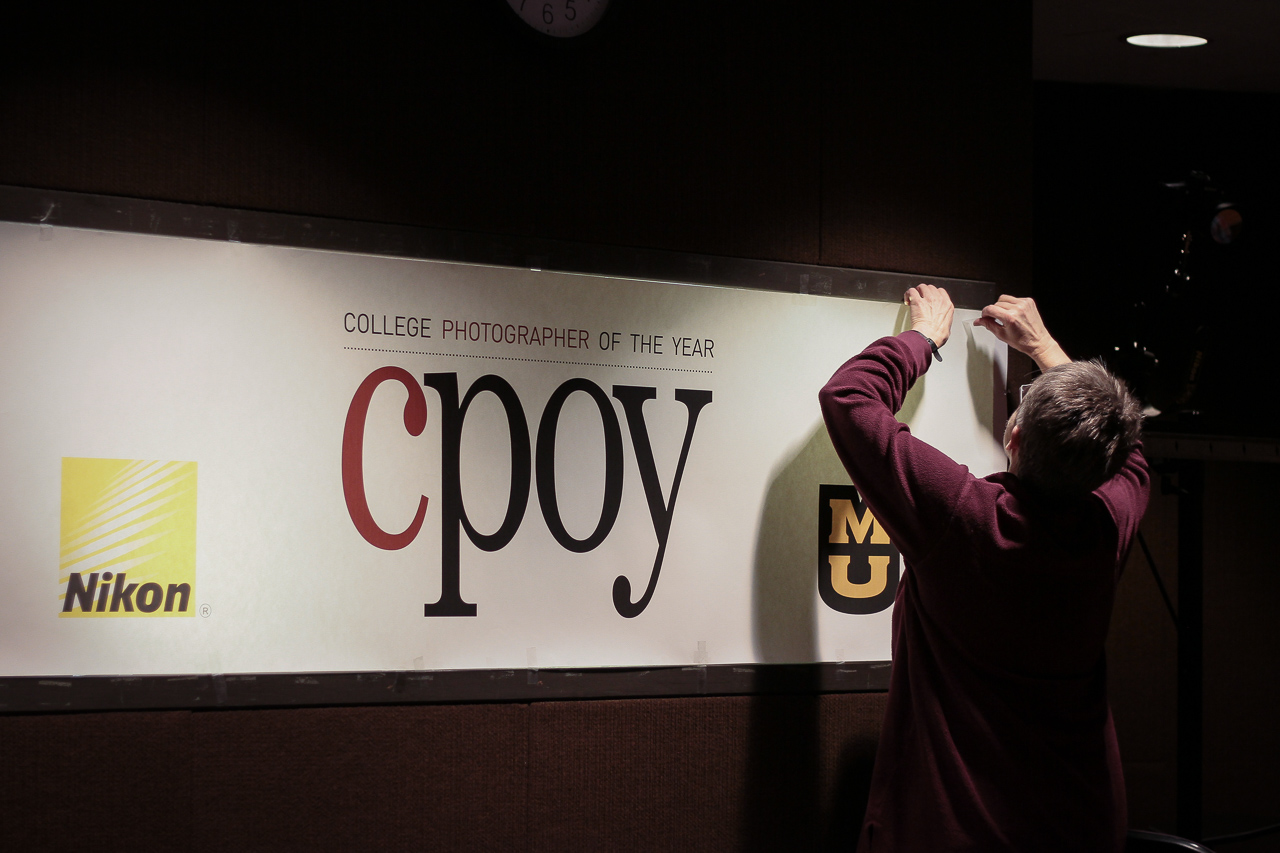
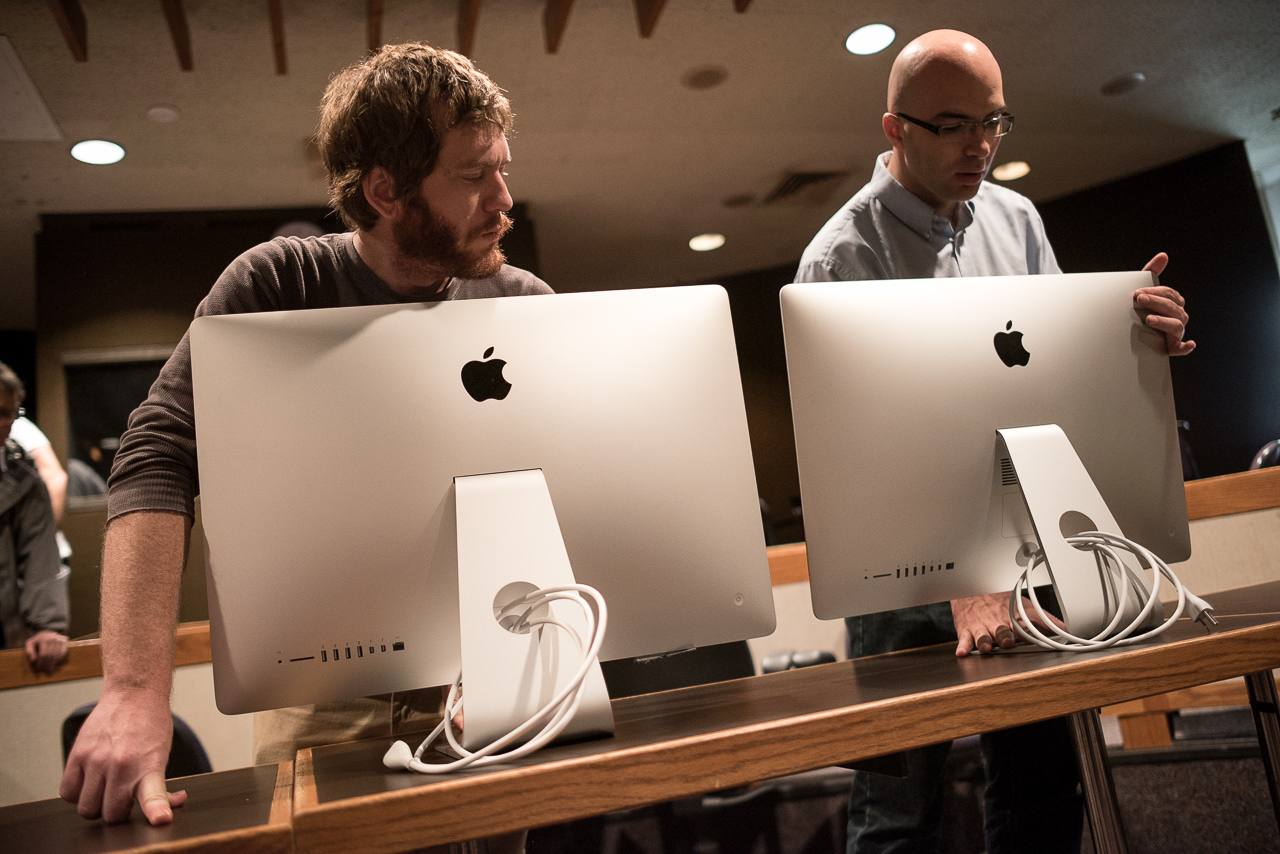
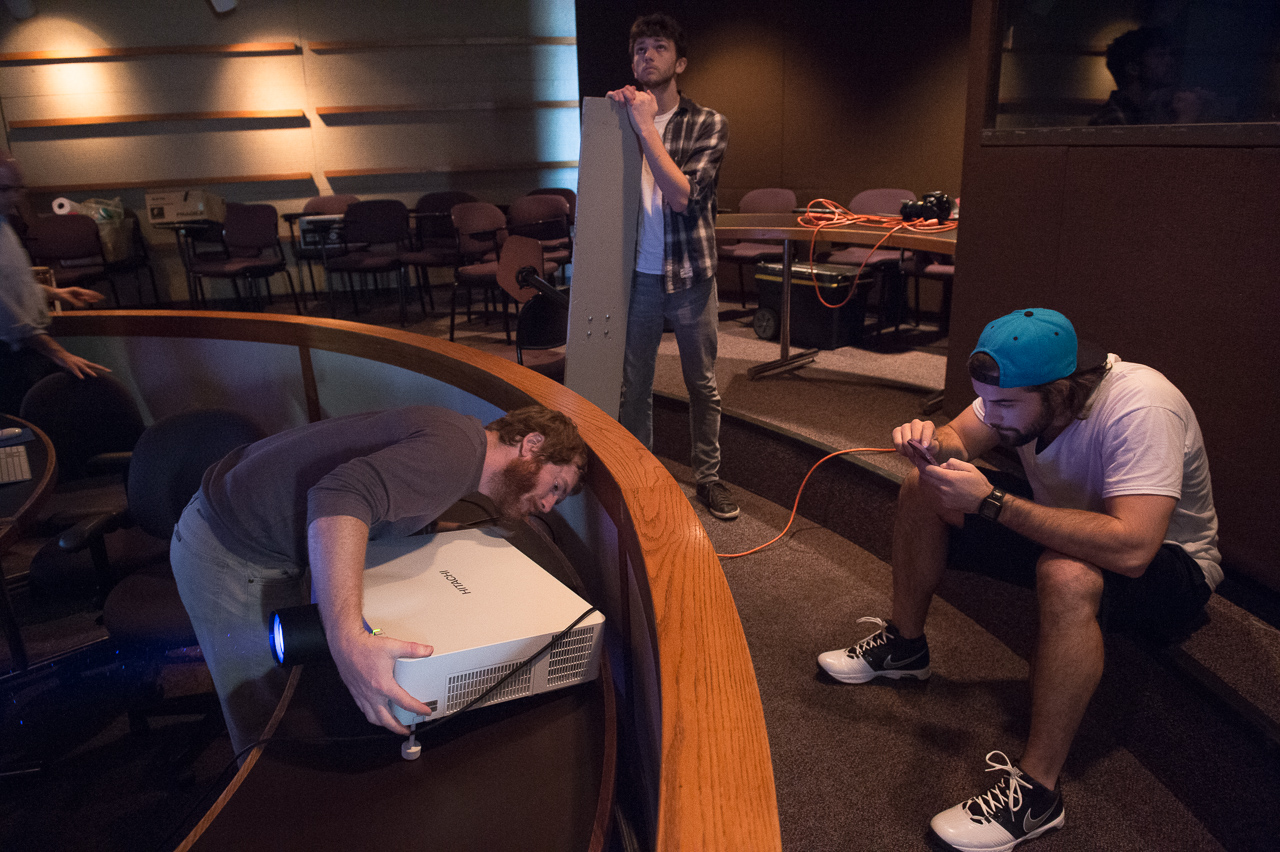
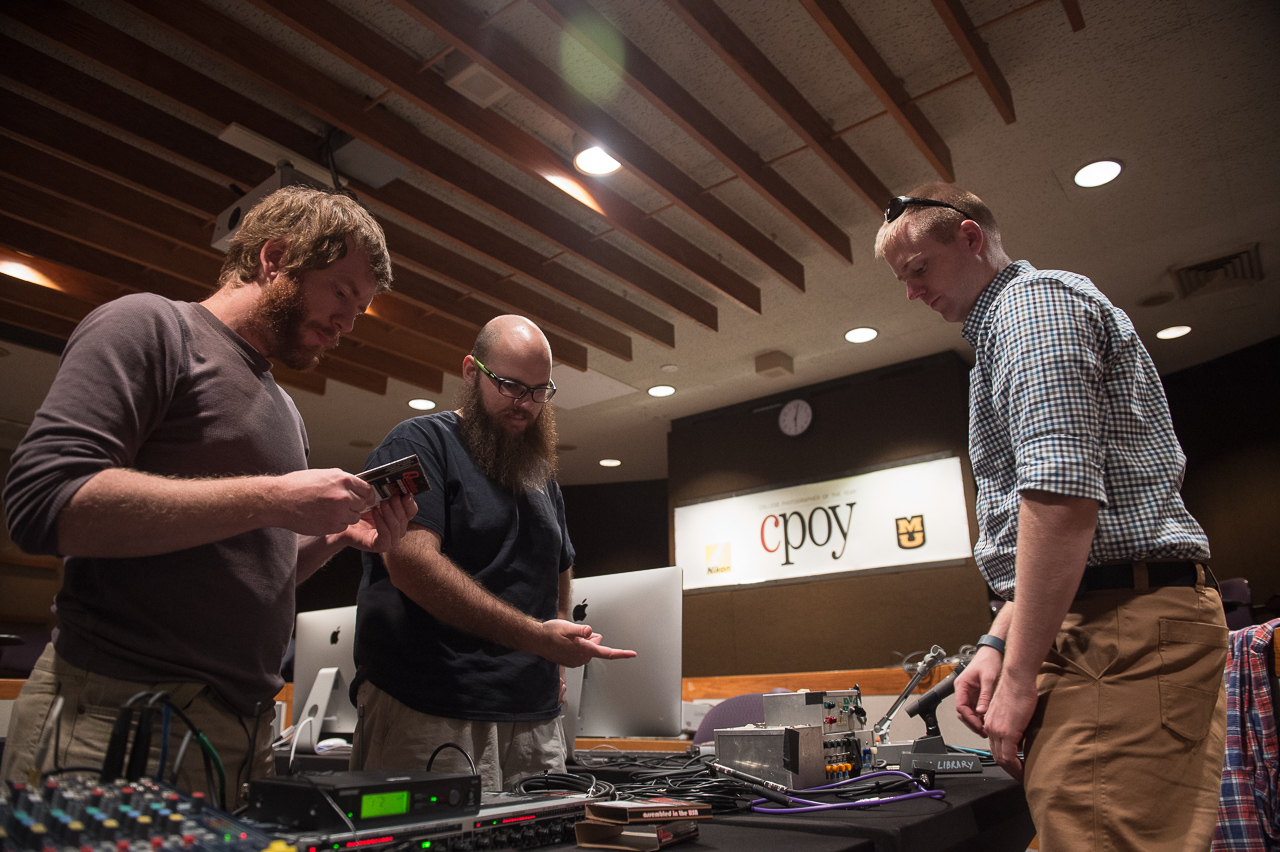
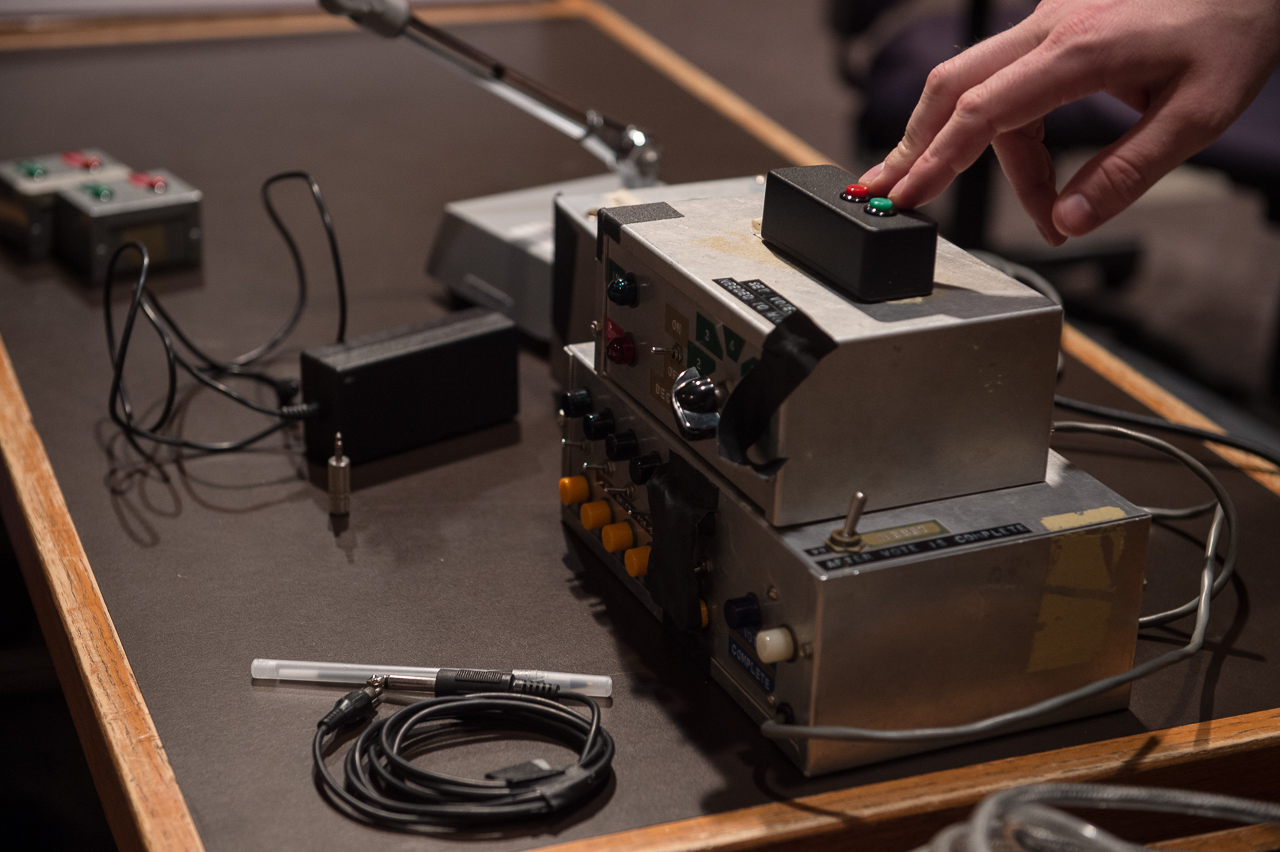
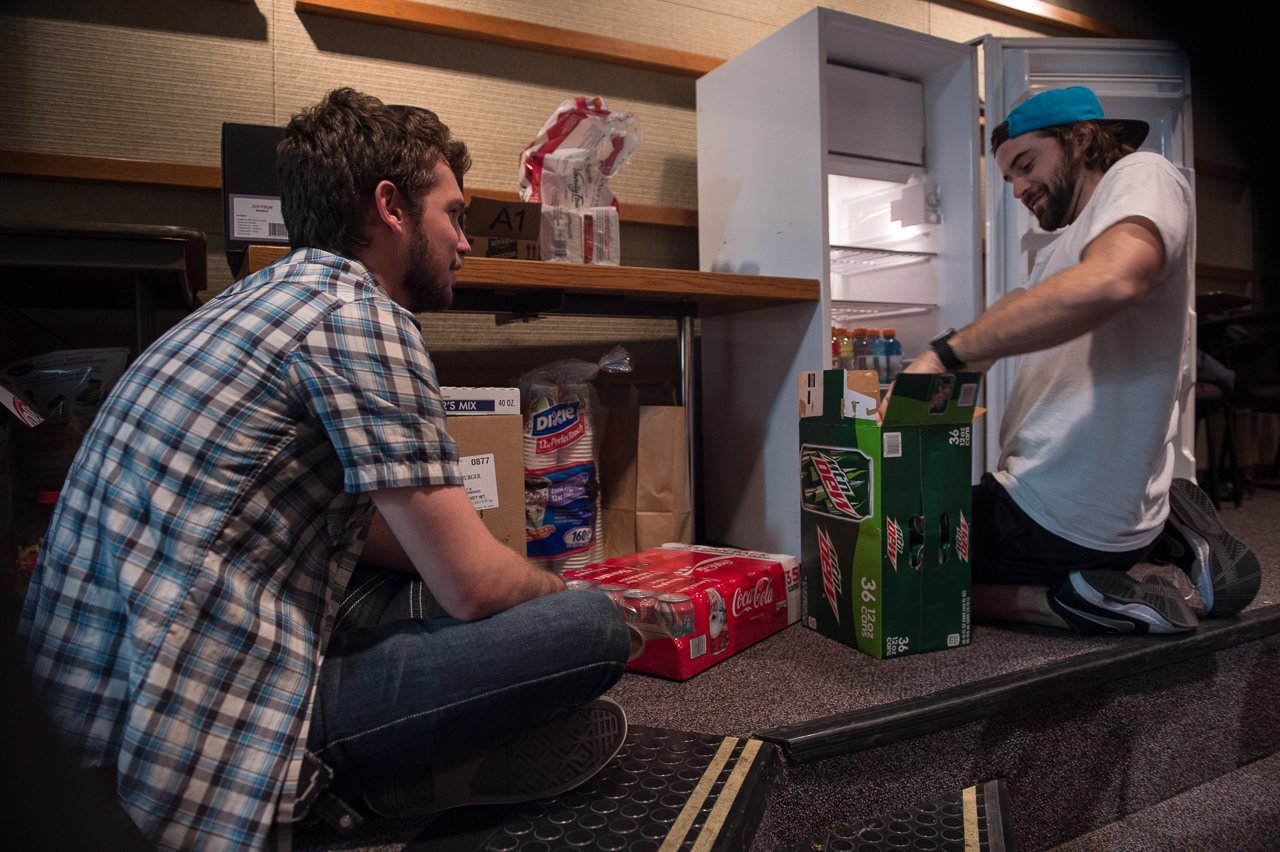
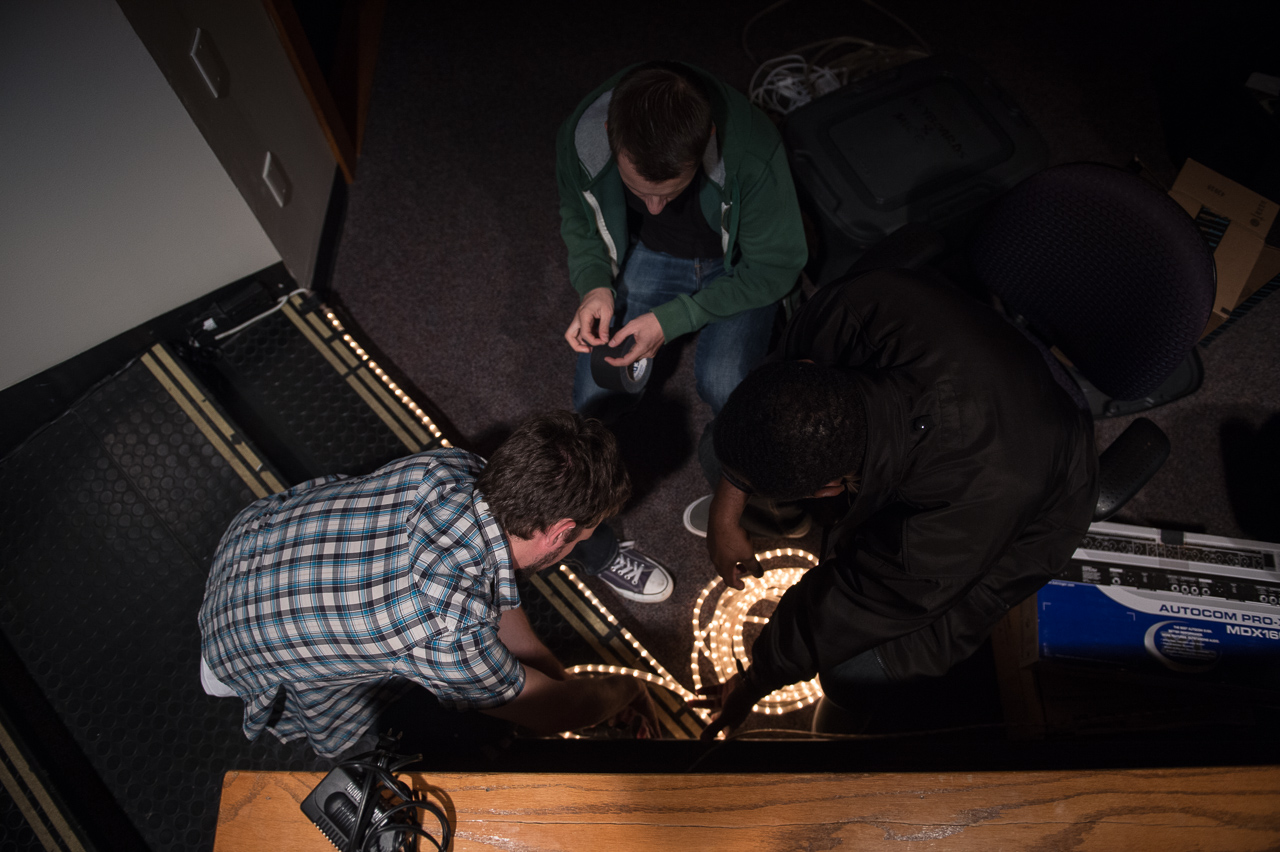
Photos by Evan Cobb, Alexey Furman and Tanzi Propst.
This post is from CPOY 70. Click
here to view only current posts.
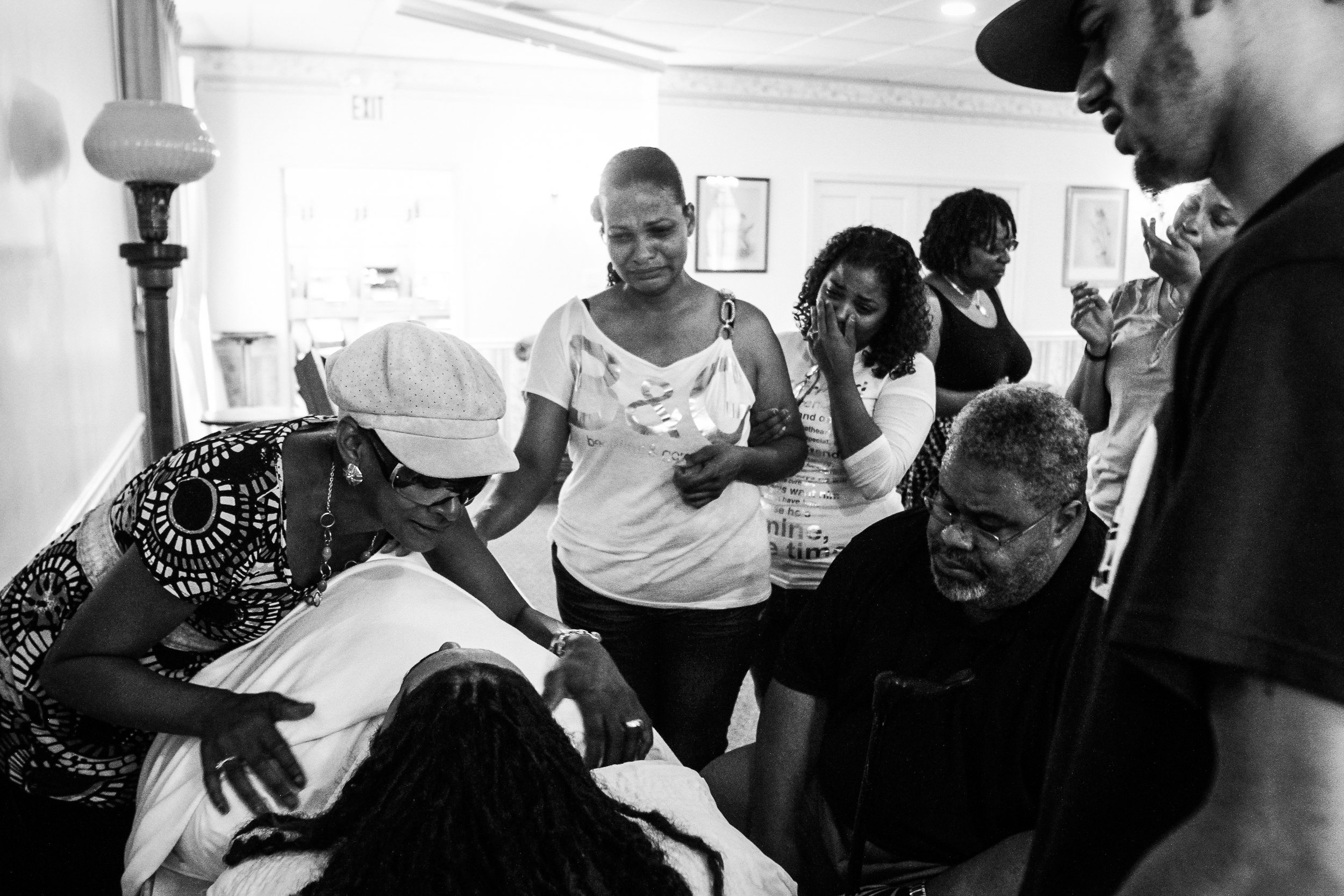
Andrew Renneisen's project 'Violent Times' got an Award of Excellence in Documentary category at CPOY 69. Catching Photo of Yours (CPOY) is a new CPOY Blog feature that gives photographers a chance to share the emotional and technical aspects of making their award-winning photograph.
My story, Violent Times, originally started from internship assignments at the newspapers I was working on at the time. I covered a few vigils in Wilmington and Atlantic City, and realized violence was affecting so many people in the cities throughout the United States. I decided that I wanted to show this on a deeper level so I started working on the story on my own as a personal project. I had help through the Alexia Foundation, which funds documentary projects that promote social change.
By being present in communities affected by violence, I was able to meet and connect with people who wanted their stories told. I think building trust is the most important part of gaining access for a story like this. By being honest and open about my intentions, I was able to build trust with the people I photographed.
I think the image of Zachary Taylor and his mother at the funeral home is one of the photographs which has affected me most. I was 20 years old at the time I made this picture. Mr. Taylor was 19 years old when he was killed in Atlantic City. His mother invited me to come with them to see her son’s body for the first time. On my way back to my car after making these photographs, I found myself weeping, which had never happened to me on an assignment before.
It was the first time on an assignment I realized how powerful the camera can be, and I think this moment had a profound impact on the way I thought about this story. I don’t necessarily think I am going to change the world through my stories, but if I can have the viewer see something from a different perspective, or think differently than before, I feel like I have done my job.
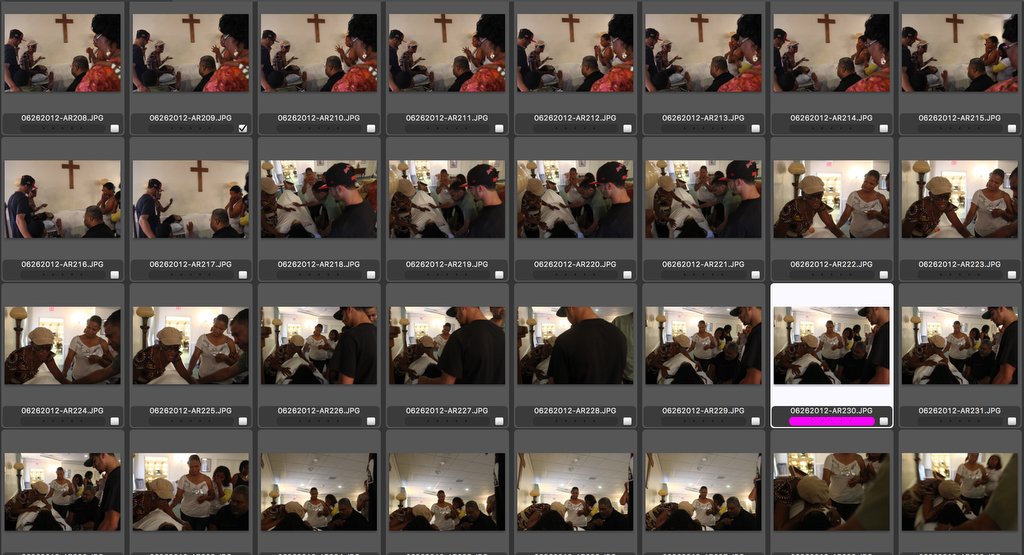
This post is from CPOY 70. Click
here to view only current posts.
This post is from CPOY 70. Click
here to view only current posts.
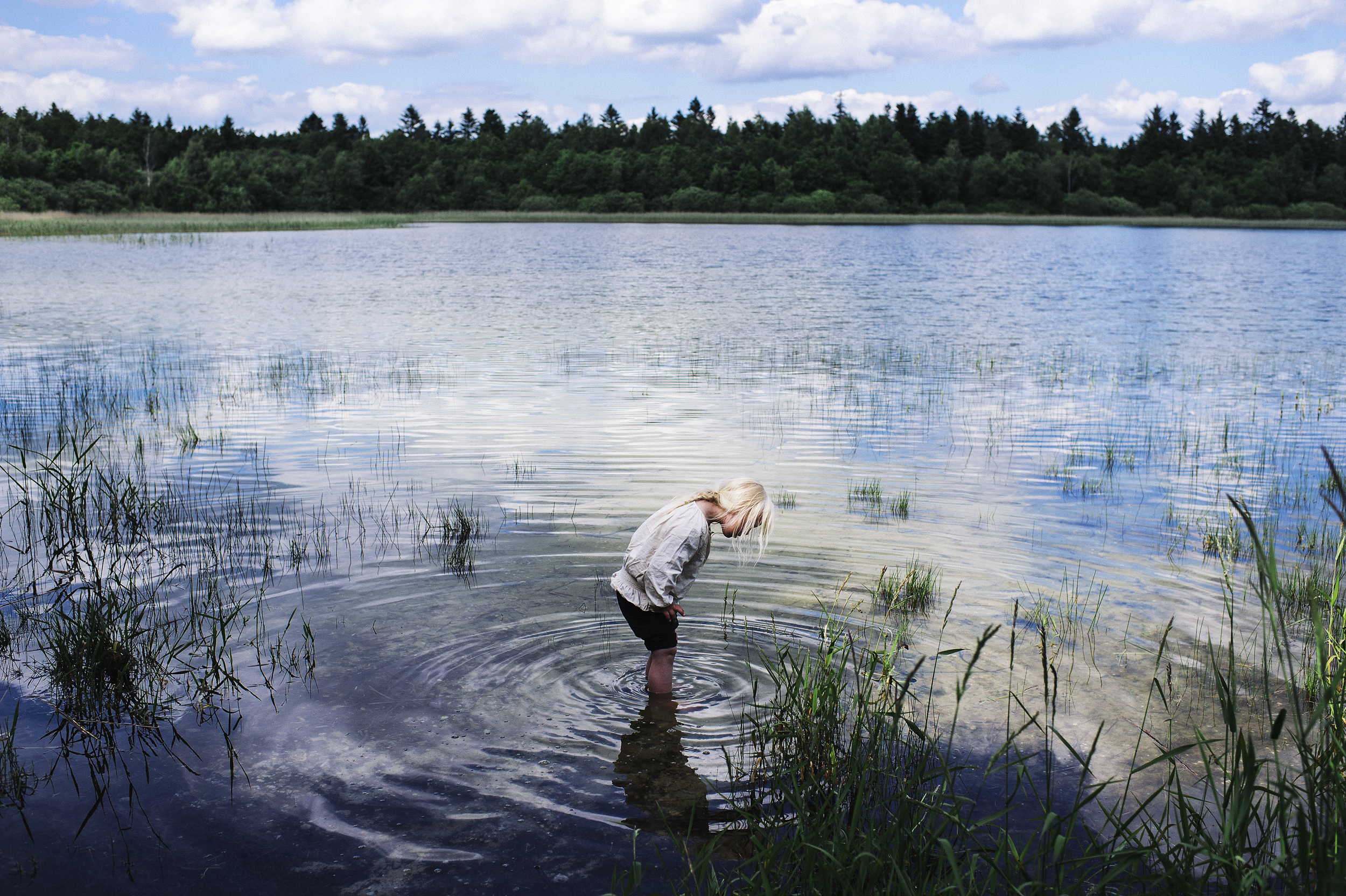
Mario Wezel's story got an Award of Excellence in the Documentary category and was a part of his CPOY 69 winning portfolio. Catching Photo of Yours (CPOY) is a new CPOY Blog feature that gives photographers a chance to share the emotional and technical aspects of making their award-winning photograph.
This set of images is from my story called “1in800”. I’ve been photographing Emmy, who has Down’s Syndrome, for the last two and half years by now.
This picture was taken last summer when I visited her and her family for a week in June. Her parents had to work that day so Emmy and her brother Kristian went on a afternoon trip with their grandmother. We drove through the lush green Danish countryside and arrived at a playground in the middle of the forrest. For about an hour we were playing hide and seek and used the slides and swings. After a short lunch break we walked back to the car and the grandmother allowed Emmy and Kristian to go play at the water. We all took our shoes off and dipped our toes in the fresh water. Emmy was braver then her younger brother and walked out into the water. I was following close behind taking pictures and looking out in case she would walk too far. Emmy suddenly stopped and it was totally quiet around her. It almost seemed like nothing was moving besides the ripples of water around her. She started starring down on her feet and stood like this for a few seconds. I could’t really tell whether she was looking at her own reflection or at her feet on the ground of the lake, but she was so focused that nothing around her could irritate her.
In the end I chose this picture to be part of the story because of that moment. Also the time leading up to it reminded me so much of what it feels like to be a child. When the world around you is still so big and exciting and you just explore everything around you. In this particular moment nothing reminded me of the fact that Emmy is a child with special needs. She was just a child, exploring the world, being curious about what happened around her.
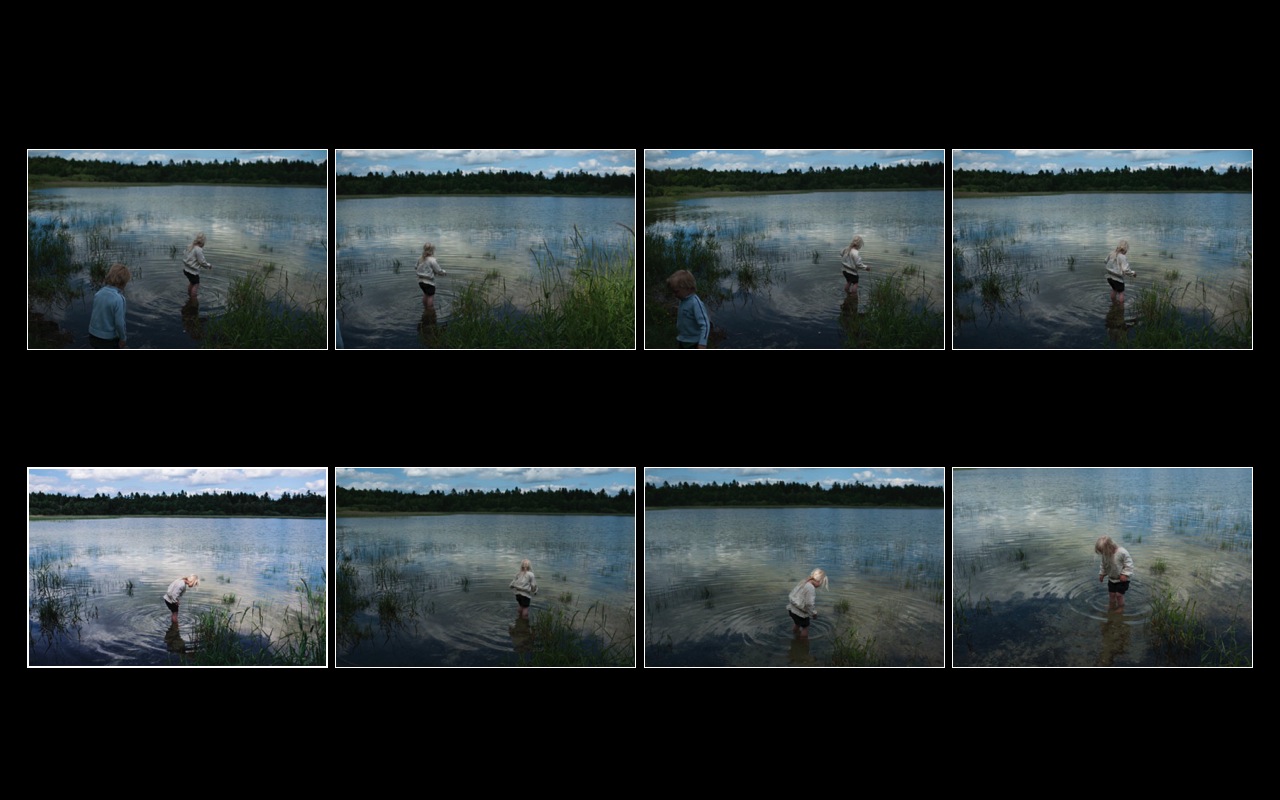
This post is from CPOY 70. Click
here to view only current posts.
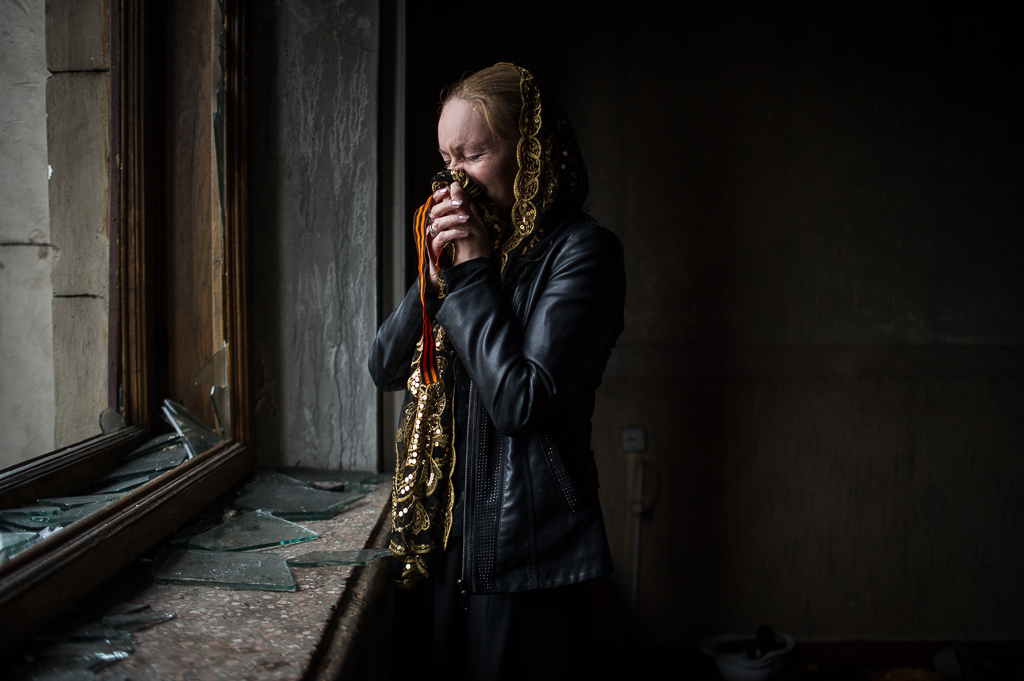
Alexey Furman's photograph 'Deadly clashes in Odessa' got Gold in General News at CPOY 69. Catching Photo of Yours (CPOY) is a new CPOY Blog feature that gives photographers a chance to share the emotional and technical aspects of making their award-winning photograph.
On the early afternoon of May 2, 2014 I was home in Kiev when I first heard about the violent clashes between pro-Russian and pro-Ukrainian protesters some 300 miles away in Odessa. I was contemplating if I should go there when news about the Trade Union House broke. Debate surrounds what exactly happened at the makeshift headquarters of the pro-Russian protesters, but at some point it caught fire, which resulted in over 30 deaths. Among the victims were those who burned alive and others who had jumped out of windows in desperation. I quickly scrambled onto the last bus to Odessa around midnight, and by morning I had arrived near the Trade Union House.
A horrifying scene waited. Everything had obviously ended by then with the exception of some communal workers cleaning the square nearby. The riot police would not let anyone inside the building while the investigation was underway. So I photographed outside and came back around noon when people started bringing flowers and candles to the stairs of the building. Some had lost loved ones in the terrible standoff. And although it was an incredibly sad scene, the crowd managed to simultaneously conduct a vigil and peaceful protest. However, there were some minor clashes with riot police.
The next day events continued in much the same way, but with a bigger crowd of around three hundred pro-Russian protesters. At some point the police literally vanished from the scene, and the crowd took notice. Slowly, people took refuge inside the burnt Trade Union House. I followed them in and sensed they were still grieving, but now also extremely angry.
I headed to the second floor and took some pictures of the crowd outside through a window. After which time I looked to my right and saw a woman holding a St. George ribbon crying her heart out. I crouched against the wall, framing the bright sky out of the picture and centering the woman. I did not want to interfere with her grief long and left as soon as the voice inside told me it was enough.
The resulting picture represents to me not only this tragedy in Odessa, but also the myriad other tragedies that have taken place across my country the last two years. It is a sad reminder of the constant grief people suffer for their deceased loved ones in yet another conflict that could have been avoided.
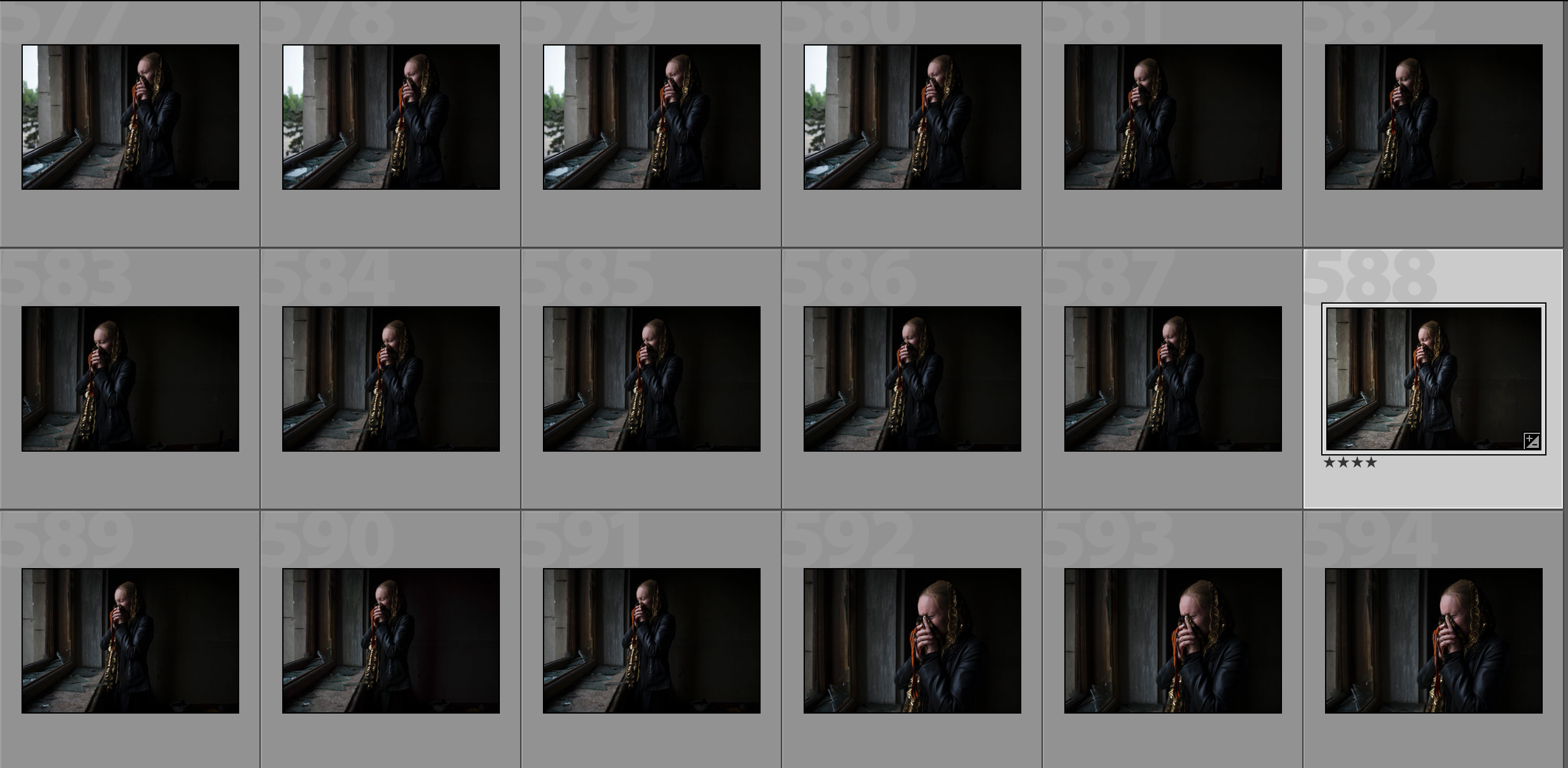
This post is from CPOY 70. Click
here to view only current posts.
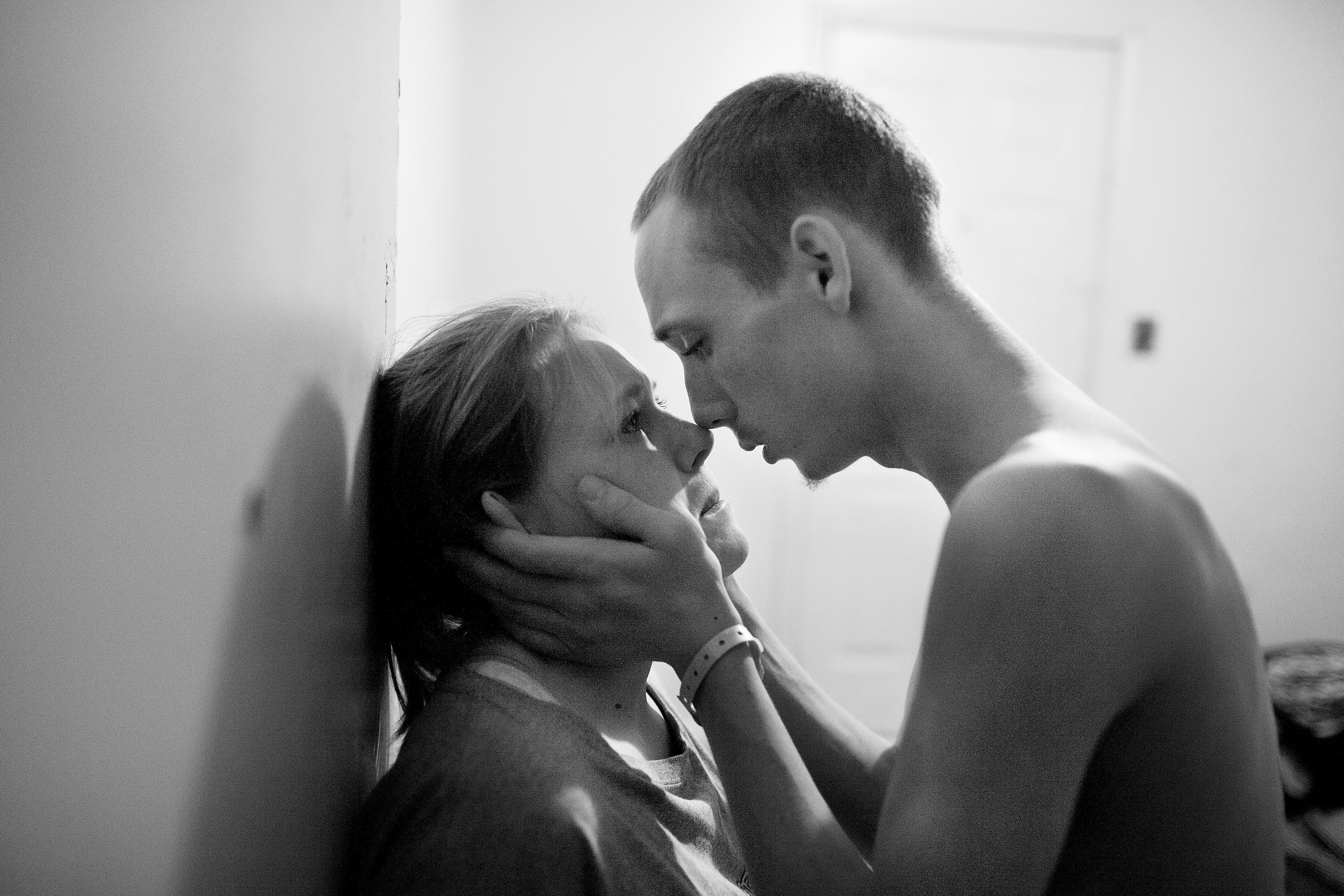
Austin Anthony's story 'Serenity' got Silver in Domestic Picture Story at CPOY 69. Catching Photo of Yours (CPOY) is a new CPOY Blog feature that gives photographers a chance to share the emotional and technical aspects of making their award-winning photograph.
I first met William and his family my freshman year of college. The first photo story I ever did was about his struggle to stay in high school. Throughout college I kept in touch, and his family became my friends. I would stop by a couple times a semester to catch up.
During one of those visits they happily told me there was a grandchild on the way. I decided to do a story about the pregnancy only knowing that they were open to me and that they didn’t hold back emotions when the camera was around. Everything had gone fairly smoothly for them up until the birth. William and Stephanie had gotten their own apartment, William had a minimum wage job, and friends and family members had given them several of the supplies they would need once the baby arrived.
The day the photo was taken began at court. The judge essentially said that the nurses were concerned about their behavior with the child and that they wanted to put Serenity (the baby) into temporary custody while they took parenting classes. Over the course of the day they began to speculate and blame each other, which lead to a long drawn out fight. I was there for all of it, which helped me feel a little more comfortable taking photos. I was one of a handful of people that knew the entire situation so I didn’t feel out of place. It was still very difficult to take the photo. It’s awful to be around two people fighting and I had to constantly remind myself that if they wanted me to leave they would have said so. And then after a lot of tears and yelling this moment happened. It felt like such a private moment, and it was so pure and beautiful. It was the moment they decided to try to let love win and not have this horrible situation tear them apart. He held her face and told her he wanted to stay together and make it work after hours of fighting. Prior to all of this I thought those moments only happened in movies.
It was one of the most emotionally exhausting days of my life. It began at 8 in the morning at the courthouse and I didn’t get home until 10 at night. I knew I had seen something special, felt lucky for that, and happy that they decided to try to make things work. But most of all I was heartbroken that they weren’t holding their baby.
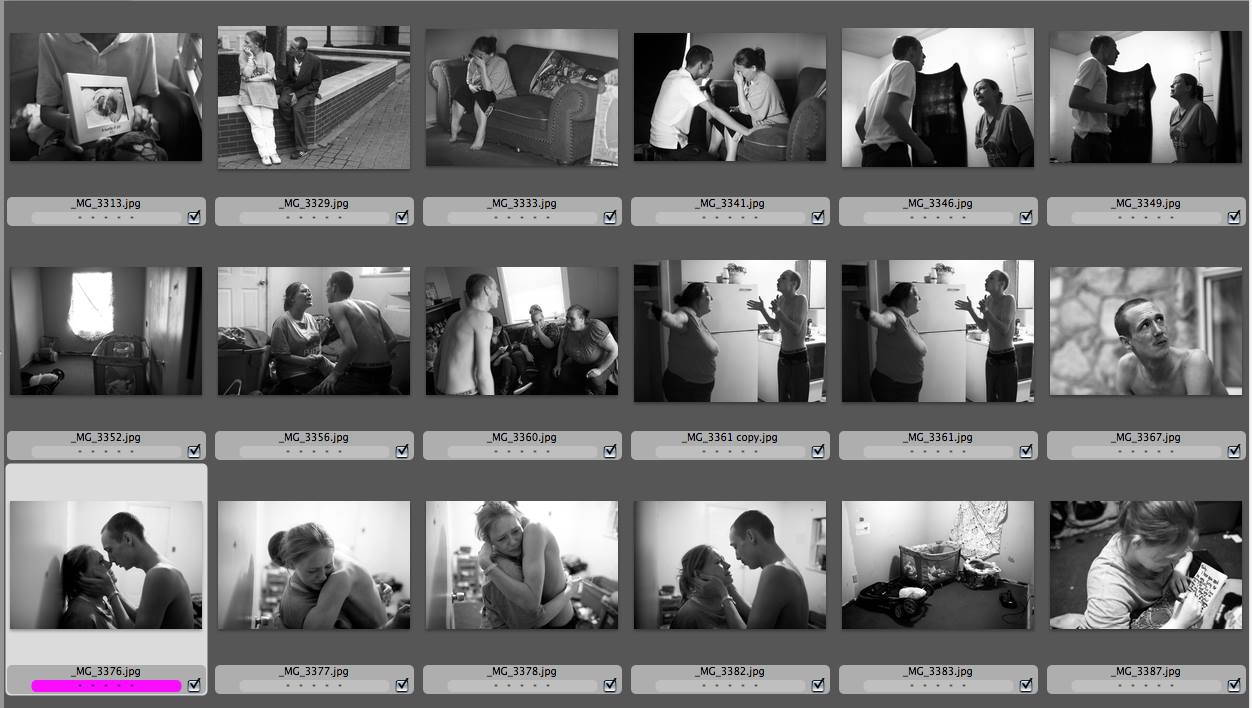
This post is from CPOY 70. Click
here to view only current posts.

Web producer Brett Slaughter (left), student coordinators Taz Lombardo and Aaron Phillips put up a projector in Tucker Forum.
Judging of the 70th College Photographer of the Year contest begins on Sunday, November 8, on the University of Missouri campus with Spot News category. This year CPOY got 11324 entries from 122 schools in 24 different countries.
There are plenty of possibilities to follow the judging online, if you can’t make it to Columbia this year.
Follow our screencasts that will be posted as soon as the first couple categories are judged.
The latest information and web updates will be available on Twitter via @collegephotog or on Facebook: College Photographer of the Year. CPOY has also recently joined Instagram, so look us there at @collegephotog.
Click here to view this year’s judges and approximate schedule.
Stay tuned for interviews with the judges; a discussion between last year’s Portfolio winners; a peek behind the scenes at Tucker Forum; or read the stories behind winners’ images in our new feature, Catching Photo of Yours.
: Use of undefined constant SHOWPREVIOUS - assumed 'SHOWPREVIOUS' (this will throw an Error in a future version of PHP) in

















